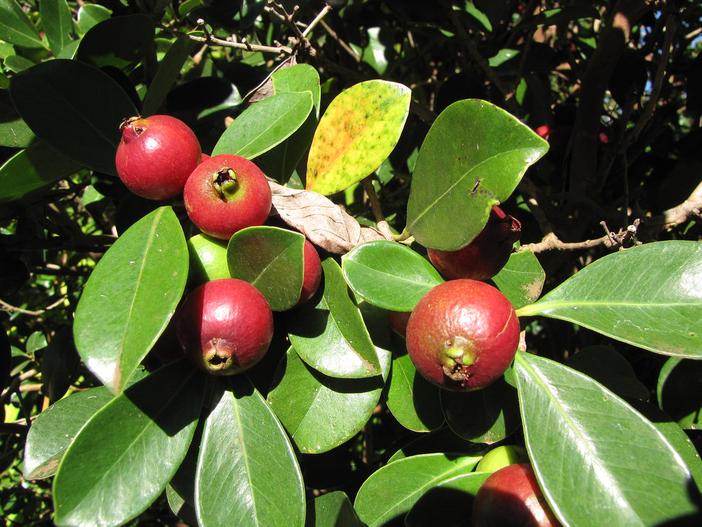Strawberry Guava
(Psidium cattleianum)
Strawberry Guava (Psidium cattleianum)
/
/

Forest and Kim Starr
CC BY 2.0




































































Estimated Native Range
Summary
Strawberry Guava is valued for its edible fruit, ornamental qualities, and as a hedge or screen plant in tropical and subtropical gardens. It is adaptable to a range of soil types, provided they offer good drainage. While it prefers full sun, it can tolerate partial shade. The plant is drought-tolerant once established and requires only moderate watering. However, it is important to be aware of its invasive potential outside its native range, particularly in Hawaii, where it has become a major invasive species, outcompeting native flora and altering ecological dynamics. Gardeners should consult local regulations before planting and consider using less aggressive species.CC BY-SA 4.0
Plant Description
- Plant Type: Tree, Shrub
- Height: 10-20 feet
- Width: 10-20 feet
- Growth Rate: Moderate
- Flower Color: White
- Flowering Season: Spring
- Leaf Retention: Evergreen
Growth Requirements
- Sun: Full Sun, Part Shade
- Water: Medium
- Drainage: Slow, Medium, Fast
Common Uses
Bee Garden, Bird Garden, Drought Tolerant, Edible*Disclaimer: Easyscape's listed plant edibility is for informational use. Always verify the safety and proper identification of any plant before consumption., Fragrant, Hedges, Street Planting
Natural Habitat
Native to the Atlantic Forest ecoregion in Southern Brazil and parts of Uruguay, including rainforests, forest edges, and clearings
Other Names
Common Names: Cherry Guava, Cattley Guava, Purple Guava, Aarbei Koejawel, Araçá, Araçá-Amarelo, Araçá-De-Coroa, Smultronguava, Araçá-Da-Praia, Araçá-De-Comer
Scientific Names: , Psidium cattleianum, Psidium littorale, Psidium littorale var. longipes, Psidium cattleianum var. cattleianum, Psidium cattleianum var. littorale, Psidium variabile, Psidium cattleyanum f. lucidum, Psidium obovatum, Eugenia urceolata
GBIF Accepted Name: Psidium cattleianum Afzel. ex Sabine